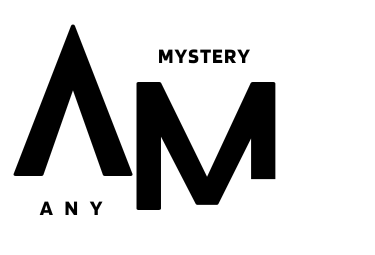Vigilante Justice: Definition, Examples, and Controversies
Vigilante justice refers to the act of individuals or groups taking the law into their own hands and engaging in extrajudicial actions against those they perceive as criminals.
Outside of judicial institutions, this sort of justice frequently entails violence, intimidation, and the use of force. The practice of vigilante justice has a long and contentious history, with examples from ancient times. This article will present an overview of vigilante justice, including its history, contemporary examples, and controversies.

History of Vigilante Justice
Since ancient times, people have practiced Vigilantism. For example, Scythian Archers were recruited by city-states in ancient Greece to police laws and preserve order. In medieval Europe, vigilante justice squads known as “night watches” were founded to combat crime and safeguard towns. However, citizens who wanted more than the degree of protection offered by local government frequently organized these associations.
During the American Frontier era in the 1800s, vigilante justice swept throughout the United States. This was due, in part, to the lack of a centralized law enforcement structure in many places, as well as the perceived corruption and inefficiency of local officials. In reaction to high levels of crime, vigilante groups such as the Montana Vigilantes developed, and Vigilantism became a dominant aspect of American society.
Historical Examples of Vigilante Justice
Throughout history, there have been numerous instances of vigilante justice. These are some prominent historical examples:
The San Francisco Vigilance Committee in the 1850s, the city of San Francisco was plagued by crime, corruption, and anarchy. A group of concerned individuals established the San Francisco Vigilance Committee. The committee took it upon itself to catch and punish suspected offenders, sometimes using force and intimidation. While the committee successfully lowered crime, it was condemned for its extrajudicial techniques and lack of accountability.
The Texas Rangers was a law enforcement agency in Texas from the 1820s through the early 1900s. The Rangers were notorious for their aggressive tactics and readiness to use force to preserve order. They were also accused of Vigilantism and brutality, notably towards Mexican Americans and other minorities.

The Ku Klux Klan (KKK) is a white supremacist group active in the United States since the late 1800s. The Klan has a lengthy history of committing vigilante justice against African-Americans, Jews, and other minority groups, including lynchings, bombings, and other acts of violence.
During World War II, tensions between Mexican-American teenagers and white sailors stationed in Los Angeles erupted into a series of violent fights known as the Zoot Suit Riots. White vigilantes attacked Mexican-American youths wearing zoot suits, a popular form of attire among young Latinos. The violence was driven by racial hate and prejudice, resulting in dozens of injuries and arrests.
The Oka Crisis In 1990, a group of Mohawk activists in Quebec, Canada, erected a barrier to protest the building of a golf course on land they claimed as their own. The demonstrators’ and authorities’ stalemate lasted many months and was marked by violent fights and Vigilantism on both sides. The incident finally ended amicably, but not before many people were hurt and one person was killed.
These cases highlight the historically complicated and frequently contentious nature of vigilante justice. While some argue that it is essential when the judicial system has failed, others see it as a risky and unfair practice that undermines the rule of law and human rights.

Modern-Day Examples
While vigilante justice is frequently linked with historical periods or the Wild West, examples may be seen worldwide. One of the most well-known modern-day examples of Vigilantism happened in Ferguson, Missouri, in 2014. After a white police officer shot an unarmed black teenager Michael Brown, demonstrators demanded justice.
Unfortunately, other people took matters into their own hands, plundering and damaging property. In response, armed locals organized organizations to safeguard local businesses and houses. While some considered these measures as essential to protect their neighborhood, others criticized the vigilantes for participating in possibly harmful and unlawful activities.
Another instance of vigilante justice happened in India when “cow protection vigilantes” developed. These organizations go after anyone they believe is involved in the unlawful killing of cows, which is sacred in Hinduism.
Citizen patrols in many cities and villages, residents have created their own patrols to watch and report suspicious activities in their communities. These patrols frequently operate independently of law enforcement organizations and occasionally engage in Vigilantism, such as confronting suspected criminals or conducting citizen arrests.
Anonymous is a decentralized collection of hackers and activists that utilize the internet to advocate different political causes and social justice problems. While they have been lauded for exposing corruption and human rights abuses, they have also been accused of Vigilantism and hacking against perceived opponents.

George Zimmerman, a Florida neighborhood watch volunteer, shot and murdered Trayvon Martin, an unarmed African-American teenager, in 2012. Zimmerman claimed self-defense and was found not guilty of murder. The case, however, prompted a nationwide discussion over racial profiling and vigilante justice, as many saw Zimmerman’s conduct as an example of a vigilante taking the law into his own hands.
These organizations frequently arm themselves and engage in conflicts with immigrants and law enforcement authorities. While some see them as a necessary response to a perceived threat to national security, others believe they are hazardous and lead to xenophobia and racial profiling.
Controversies
Despite the apparent need for vigilante justice in some cases, it is nevertheless a controversial practice. This is due to several factors. Secondly, Vigilantism is frequently viewed as an assault on the rule of law and the judicial system. As a result, individuals who seek justice on their own are effectively ignoring the authority of the state and its legal institutions.
Second, vigilante justice frequently entails violence, which can hurt or even kill innocent individuals.
Third, vigilante organizations may act on scant or inaccurate information in rare circumstances, resulting in terrible outcomes. For example, in 2018, a guy in India was beaten to death by a crowd that suspected he was engaged in child abduction, despite lacking proof.

Lastly, vigilante justice has the potential to increase societal divides and tensions. When civilians take up the role of law enforcement, it can generate a “we versus them” mindset, putting one group against another. This can lead to more violence and instability, as well as harm to societal cohesiveness.
Famous Literature, Movies, and Characters Developed Based on Vigilantism
Vigilantism has been the subject of various literature, theatre, and television programs.
“Dexter” – Based on Jeff Lindsay’s novels, this TV show depicts the life of Dexter Morgan, a blood spatter analyst who also works as a serial murderer, hunting down other serial killers who have evaded justice.
“Arrow” – Based on the DC Comics character Green Arrow, this TV show follows wealthy playboy Oliver Queen, who becomes a vigilante after being abandoned on a barren island.
“The Punisher” – Based on the Marvel Comics Frank Castle, this television series tells the narrative of a former Marine who becomes a vigilante when criminals murder his family.

“Batman” – This famous DC Comics character has been the focus of several adaptations, including TV shows and films. Batman is a vigilante who battles crime in Gotham City. Batman is a vigilante who fights crime in Gotham City.
“V for Vendetta” – This graphic novel by Alan Moore and David Lloyd depicts the narrative of a vigilante named V who battles against a totalitarian government in a dystopian future. V’s narrative was eventually turned into a popular film.
“The Count of Monte Cristo” – This famous novel by Alexandre Dumas follows the narrative of Edmond Dantès, who becomes a vigilante after being unfairly imprisoned and pursues vengeance on those who wronged him.
“The Boondock Saints” – This cult classic film tells the narrative of two brothers who become vigilantes and begin killing criminals in Boston.
“Death Wish” – Charles Bronson appears as Paul Kersey, a father who becomes a vigilante after his wife is murdered and his daughter is molested in this 1974 film.
“The Equalizer” – From 1985 to 1989, this TV series starred Edward Woodward as Robert McCall, a former spy who becomes a vigilante and helps those in need.
“The Equalizer” – From 1985 to 1989, this TV series starred Edward Woodward as Robert McCall, a former spy who becomes a vigilante and helps those in need.
“Kick-Ass” – This comic book series by Mark Millar and John Romita Jr. depicts the story of a youngster called Dave Lizewski who becomes a superhero/vigilante after being inspired by comics. This was later adopted as a movie.
“John Wick” – Keanu Reeves plays a former hitman who becomes a vigilante when his wife is murdered, and Russian thugs slaughter his puppy.
“The Girl with the Dragon Tattoo” – This novel by Stieg Larsson involves a vigilante named Lisbeth Salander, a hacker who exacts retribution on men who have wronged women.
“The Shadow” – This pulp magazine character has been adapted several times, including a 1994 film starring Alec Baldwin. The Shadow is a vigilante who fights crime using his abilities to fog men’s brains.
“Blindspot” – This TV series recounts the narrative of Jane Doe, a lady with amnesia with tattoos all over her body that reveal clues to numerous murders. She joins forces with the FBI to become a vigilante and bring criminals to justice.
Conclusion
A difficult and contentious issue, vigilante justice has existed throughout human history. While Vigilantism may appear to be a legitimate response to a failure of the judicial system in some cases, it is vital to note that it may also be harmful, unfair, and contribute to the breakdown of the rule of law.
It is critical to recognize that Vigilantism is not a realistic answer to our society’s challenges. Instead, we should focus on structural change and reform to address the core causes of crime, corruption, and unfairness.
This might involve increasing law enforcement agencies’ efficacy and accountability, tackling social and economic inequalities, and encouraging respect for human rights and the rule of law.
Furthermore, it is critical to note that Vigilantism can result in a hazardous cycle of violence and vengeance. When individuals take the law into their own hands, they risk inciting others to do the same. This can lead to a collapse in the social order, as well as an increase in violence and instability.
Sources
https://mhs.mt.gov/education/StoriesOfTheLand/Part2/Chapter6/Ch6Educators/vigilantes
https://www.bbc.com/news/world-asia-india-64701344
https://edition.cnn.com/2020/08/30/politics/vigilante-group-activity-kenosha/index.html







